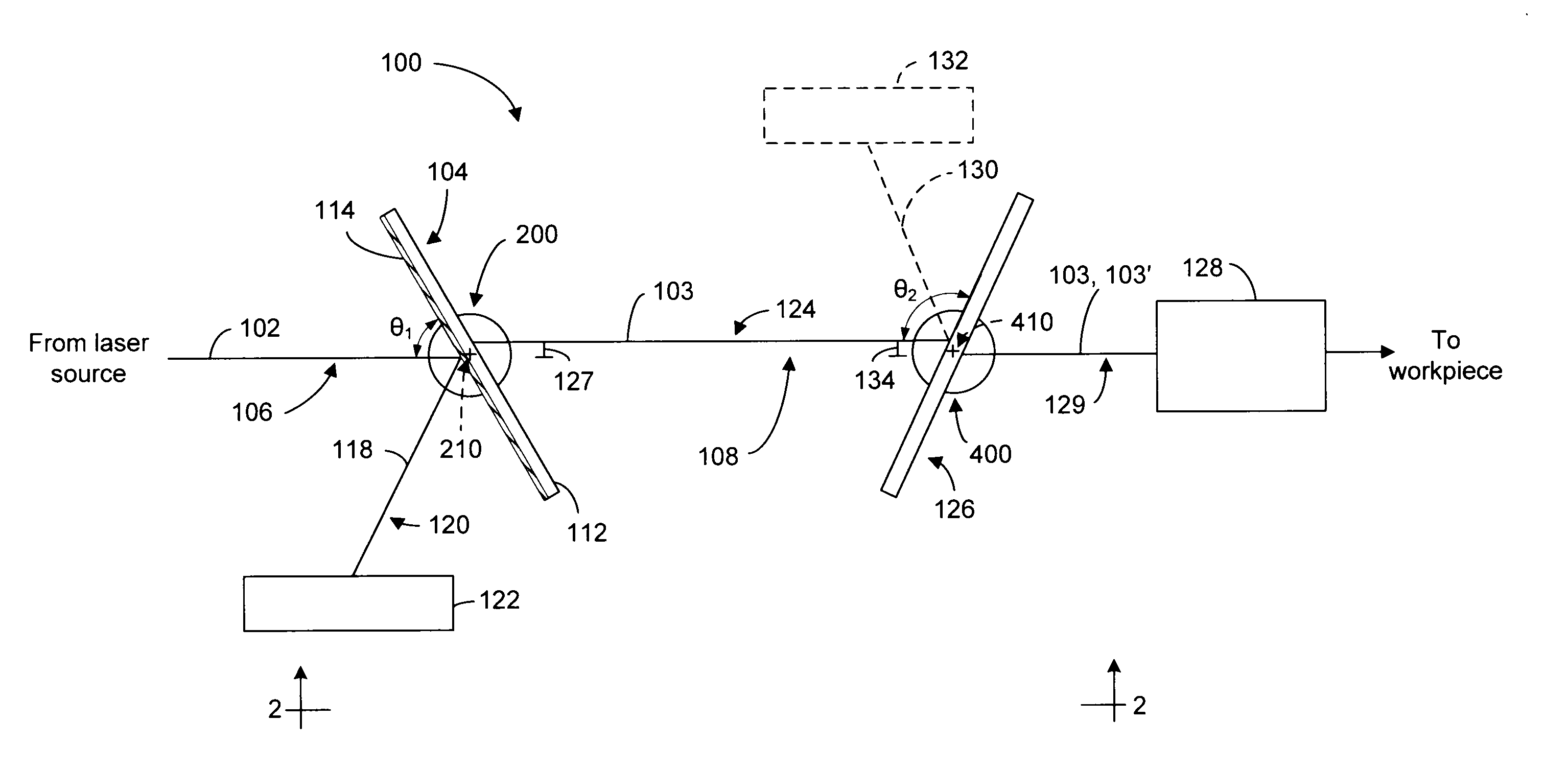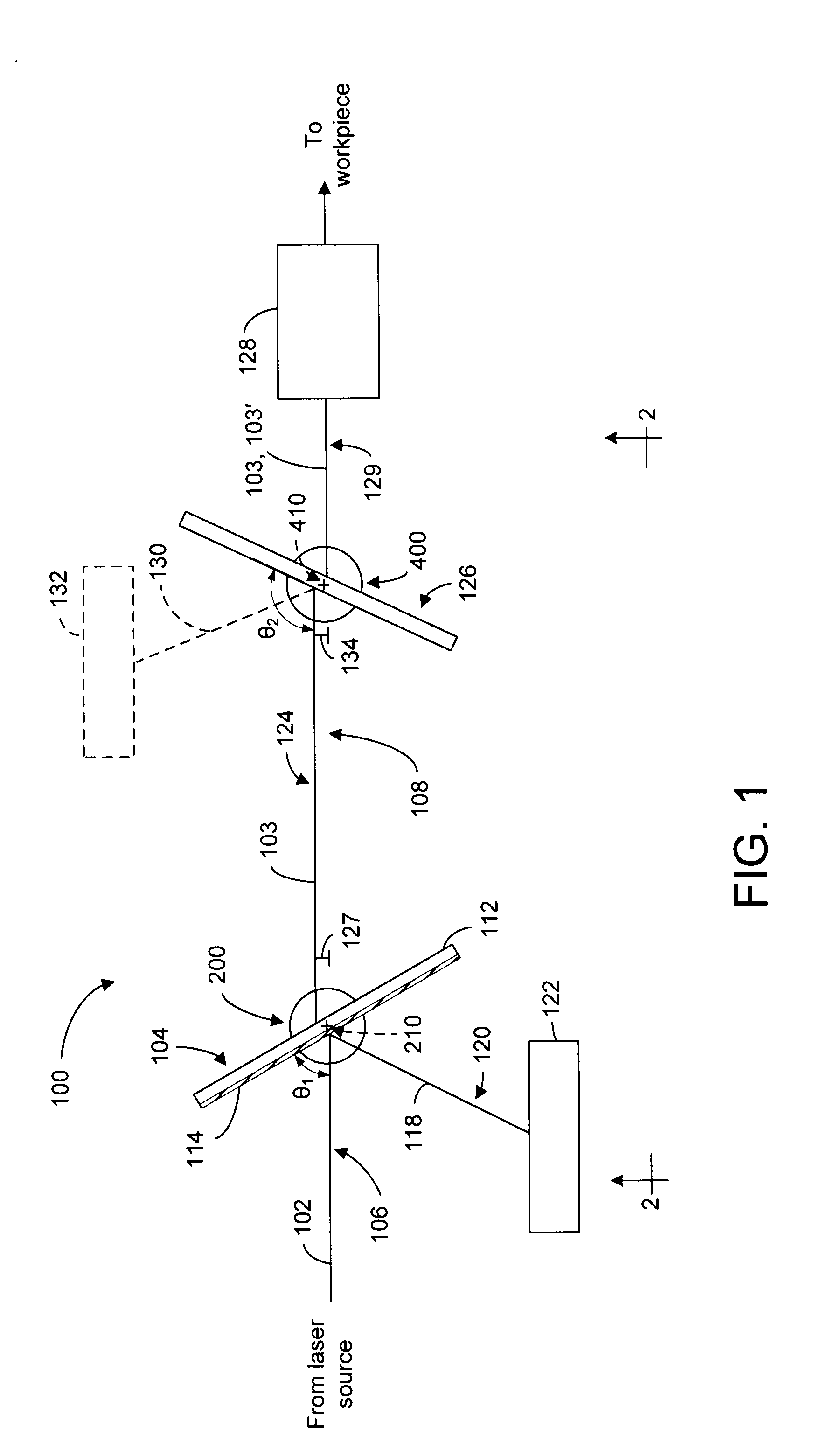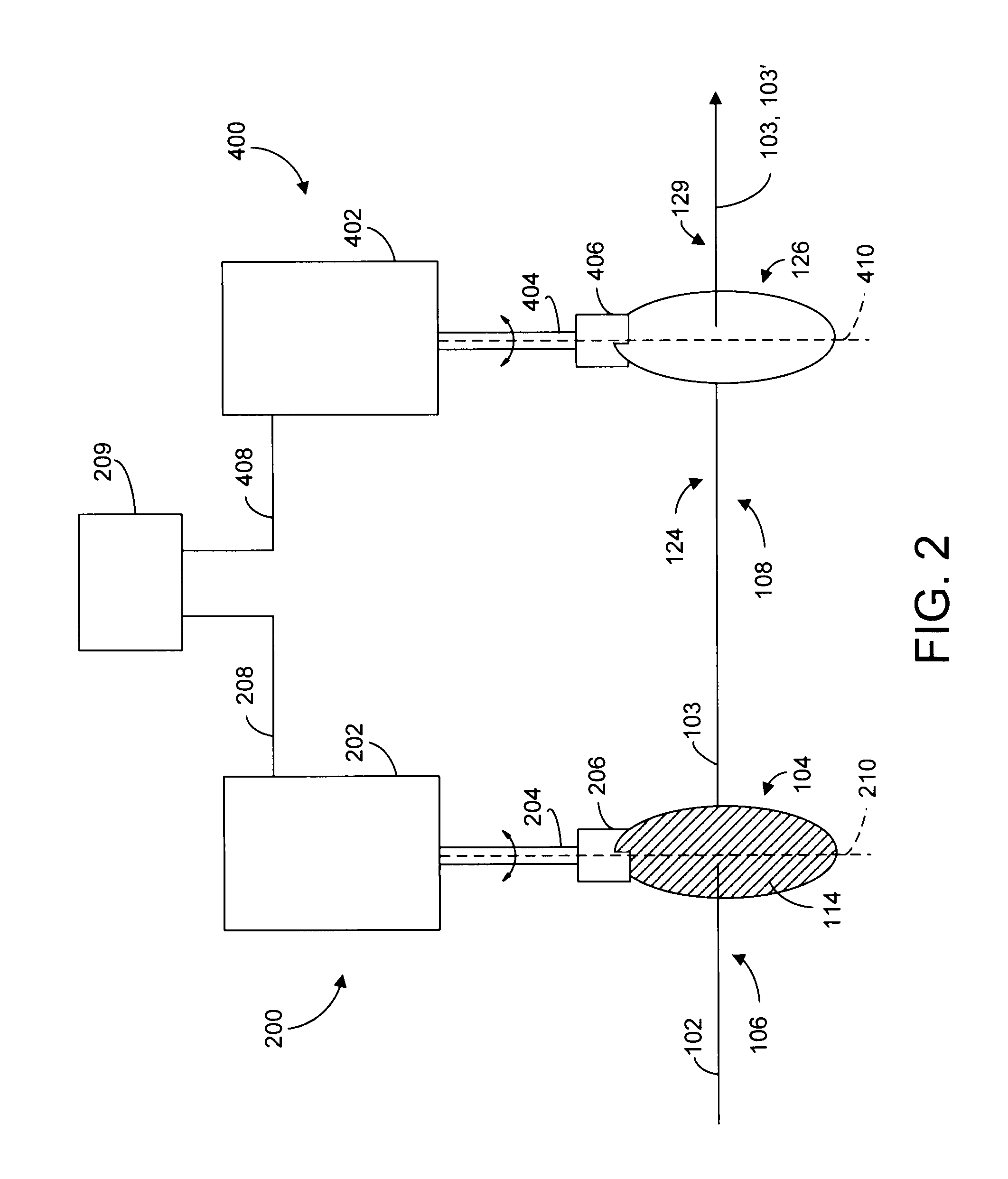Method for accomplishing high-speed intensity variation of a polarized output laser beam
- Summary
- Abstract
- Description
- Claims
- Application Information
AI Technical Summary
Benefits of technology
Problems solved by technology
Method used
Image
Examples
Embodiment Construction
[0011]FIG. 1 is a schematic block diagram showing the hardware architecture of an embodiment of a system 100 for selectively attenuating an input laser beam 102 to produce a polarized output laser beam 103 of varying intensity (e.g., power level). Input laser beam 102 includes p-polarized light and, preferably, excludes substantially all s-polarized light. Input laser beam 102 is generated by a conventional laser source (not shown), such as, but not limited to, an ultraviolet (UV) laser source (e.g., a 355 nm laser). System 100 includes an angle of light incidence sensitive optical element 104 positioned to intersect a first portion 106 of a beam path 108 along which input laser beam 102 propagates towards a target location on a workpiece (not shown). In one example, optical element 104 is a polarizer, preferably a thin-film polarizer. However, any other optical element may be used that is characterized by an incident light transmission efficiency that varies as a function of an ang...
PUM
 Login to View More
Login to View More Abstract
Description
Claims
Application Information
 Login to View More
Login to View More - R&D Engineer
- R&D Manager
- IP Professional
- Industry Leading Data Capabilities
- Powerful AI technology
- Patent DNA Extraction
Browse by: Latest US Patents, China's latest patents, Technical Efficacy Thesaurus, Application Domain, Technology Topic, Popular Technical Reports.
© 2024 PatSnap. All rights reserved.Legal|Privacy policy|Modern Slavery Act Transparency Statement|Sitemap|About US| Contact US: help@patsnap.com










